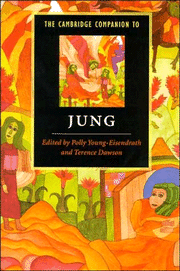Book contents
2 - Freud, Jung, and psychoanalysis
from Part 1 - Jung's ideas and their context
Published online by Cambridge University Press: 28 May 2006
Summary
One repays a teacher badly if one remains only a pupil. And why, then, should you not pluck at my laurels? You respect me; but how if one day your respect should tumble? Take care that a falling statue does not strike you dead! You had not yet sought yourselves when you found me. Thus do all believers -. Now I bid you lose me and find yourselves; and only when you have all denied me will I return to you.
(Nietzsche, Thus Spoke Zarathustra, quoted Jung to Freud, 1912)Freudian psychoanalysis, a related body of clinical technique, interpretive strategy, and developmental theory, was articulated piecemeal in dozens of publications by Sigmund Freud, spread over a period of forty-five years. The structure of Freud's monumental twenty-three-volume corpus has been the subject of thousands of critical studies, and Freud is still one of the most popular subjects for biographers. Despite this wealth of writing, however, the effectiveness of Freud's therapeutic methods and the adequacy of his theories remain subjects of animated debate.
- Type
- Chapter
- Information
- The Cambridge Companion to Jung , pp. 35 - 51Publisher: Cambridge University PressPrint publication year: 1997
References
- 1
- Cited by



